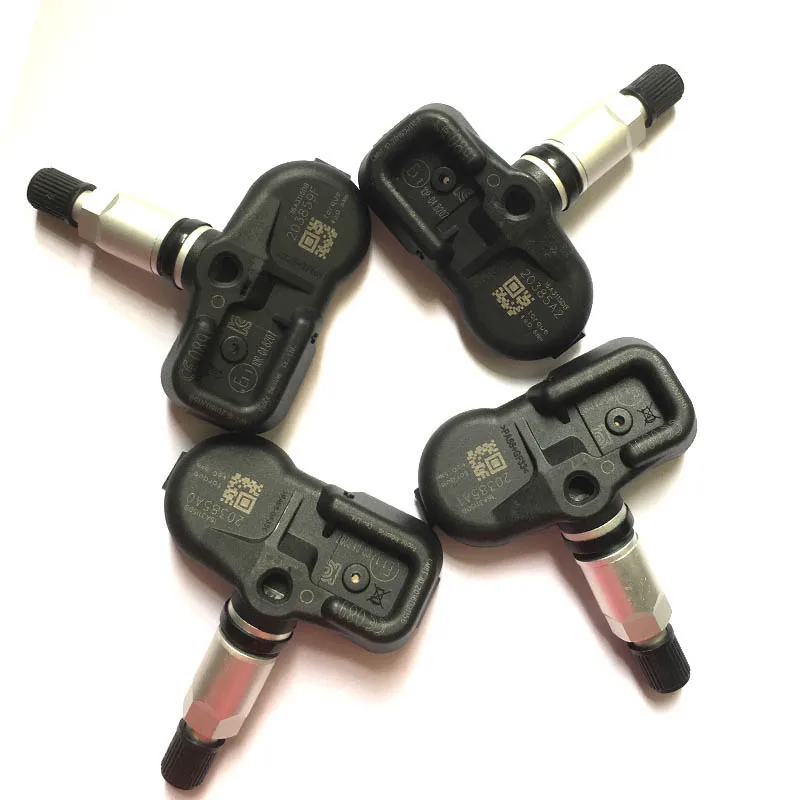I recently got a digital tire gauge as a gift. I was trying it out on my Toyota Camry, but then I got to thinking: I’m not even sure what a good pressure level for my tires is. What’s the ideal Toyota Camry tire pressure?
Melanie Mergen · Answered on Mar 31, 2022
Reviewed by Shannon Martin, Licensed Insurance Agent.
What a useful gift! A solid range for a Toyota Camry’s tire pressure is about 32 to 35 PSI when the tires are cold.
By cold, we mean your car’s been given some time to cool down after it’s been on the road—the friction of the road against your tires can make the temperature and air pressure rise, making it difficult to get an accurate tire pressure reading.
You know what can sometimes feel like too much pressure? Trying to find the right car insurance policy. Luckily, the Jerry app can help make insurance shopping a breeze!
If you’ve never used Jerry before, all you have to do is answer a few quick questions, and then you can start comparing car insurance quotes from top insurance providers, all in one place. From there, you can pick the best coverage option for you at the right price.
Getting started takes less than a minute, and the average Jerry user enjoys a savings of $887 per year on car insurance!
MORE: Car Loan for Toyota 2022
ToyotaCar Maintenance
WHY YOU CAN TRUST JERRY
Jerry partners with more than 50 insurance companies, but our content is independently researched, written, and fact-checked by our team of editors and agents. We aren’t paid for reviews or other content.
Browse More Content
What To Do If Coolant Is Leaking
What is a Condenser Fan Relay Replacement?
Clutch Cable: Replacement Cost
Brake Warning Light Is On: Inspection Cost
Front Ball Joint: Replacement Cost
Ford Explorer St Insurance Cost
Kia Sportage S Insurance Cost
Kia Optima Plug-In Hybrid Insurance Cost
Kia Telluride Lx Insurance Cost
Ford Mustang Shelby Gt350 Insurance Cost
Cheap Car Insurance in Alaska
Cheap Car Insurance in Michigan
Cheap Car Insurance in District Of Columbia
Cheap Car Insurance in Hawaii
Cheap Car Insurance in Oregon
I’m looking to buy a newer Toyota Camry, but I do a lot of outdoor activities and need a lot of trunk space.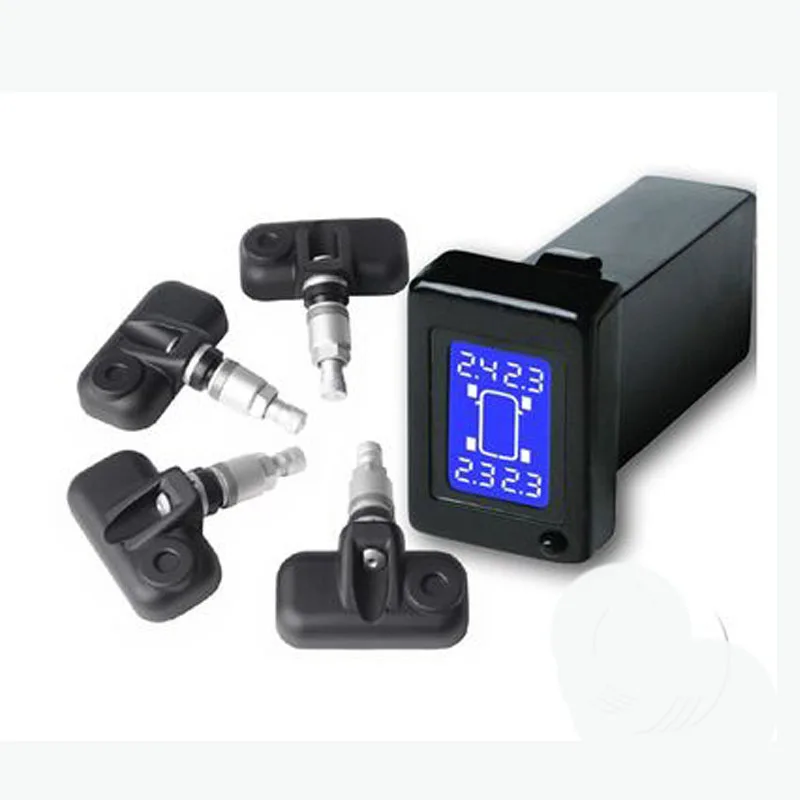 What’s a Toyota Camry’s trunk space?
What’s a Toyota Camry’s trunk space?
Melanie Mergen
Mar 31, 2022
As I research cars that could be right for me, I have a feeling my next vehicle’s going to be a Jeep Compass. What are the features in a 2020 Jeep Compass interior?
Melanie Mergen
Mar 31, 2022
I recently bought a used Honda Civic, and it runs great around the neighborhood, but when I take it on the highway, the engine starts to misfire. Anything over 3000 RPM seems to be too much for the engine. What causes a misfire at high RPM? Can it be fixed easily?
Lynell Spencer
Mar 31, 2022
Browse All Questions
As of 2022, Arizona gas tax is $0.18 per gallon, which is lower than most other states across the country.
Shannon Fitzgerald
Oct 04, 2022
The Chevrolet Suburban isn't having the best year. Could gas prices be to blame?
Could gas prices be to blame?
Shannon Fitzgerald
Aug 14, 2022
Speeding
Road trips
Convertibles
Connecticut
Travel
Car Transport
Minnesota
Towing
Trailers
insurance agents and brokers
South Carolina
Car Insurance Companies
Cruise Control
Michigan
Kemper Preferred
Liability Coverage
Car Knowledge
Car Damage
Liberty Mutual
Refinancing
Insurance Agents
Arizona
Driving Games
Pop culture
Insurance Industry
No long forms
No spam or unwanted phone calls
Quotes from top insurance companies
Find insurance savings — it's 100% free
Car Insurance
Cheap Car Insurance
Car Insurance Quotes Online
Types of Insurance
Toyota
Hyundai
Mercedes-Benz
Subaru
Chevrolet
Mitsubishi
ALAKAZARCACOCTDEFLGAHIIDILINIAKSKYLAMEMDMAMIMNMSMOMTNENVNHNJNMNYNCNDOHOKORPARISCSDTNTXUTVTVAWAWVWIWY
By John Goreham G+ Oct 21 2020 - 2:32pm
If you have a Toyota Camry with the tire pressure warning light on, here is what to do and why it came on.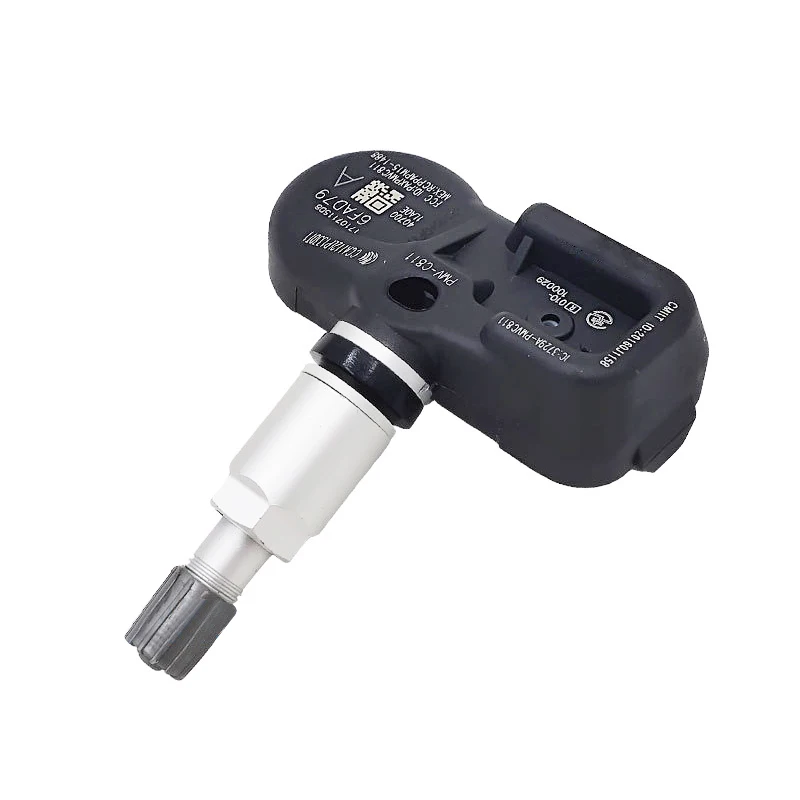
Advertisement
Tire pressure monitoring systems are mandated by law in America. This is not a feature that Toyota installs as a feature on just some Camry trims. For more than a decade, Toyota has been installing systems and they have been driving some Camry owners crazy. While they certainly do help let you know if a tire is deflated, in many cases, these systems can be an annoyance.
Here are the reasons that your Toyota Camry has a “Tire Pressure Warning System” alert as Toyota calls it. We will refer to it as “TPWS” from here forward. Before we begin, if your TPWS system warning light is on now, immediately check your tire pressure. Some cars can display the tire pressure in the information display. If yours doesn’t, use a tire pressure gauge to check the pressures. The correct setpoints for your Camry are listed on the driver’s door. Do not drive your Prius with the TPWS light on without verifying that the tires have proper air pressure.
Camry Tire Pressure Warning - Temperatures Have Dropped
If seasonal temperatures are dropping and your TPWS warning light is illuminated, the reason is most likely due to the temperature difference between when the pressure was last set and the current temperatures.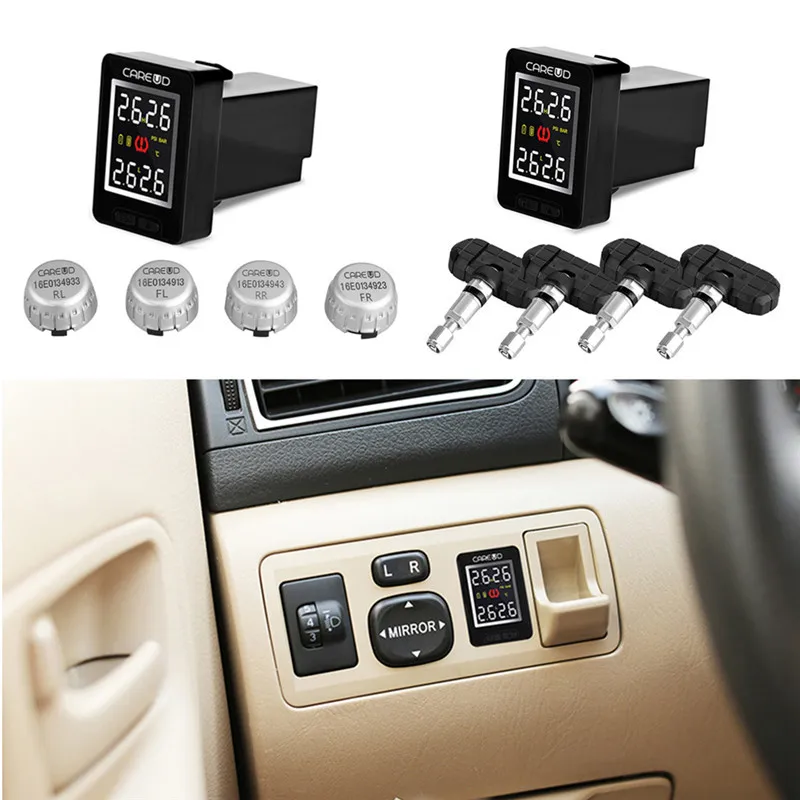 The pressure inside a tire drops with temperature. You need to reset the tire pressure in early winter and early summer. The air didn’t leak out of the tire. It simply became lower in pressure as the temperatures declined. This happens to all tires, in all vehicles, regardless of what gas is inside of them (air or nitrogen).
The pressure inside a tire drops with temperature. You need to reset the tire pressure in early winter and early summer. The air didn’t leak out of the tire. It simply became lower in pressure as the temperatures declined. This happens to all tires, in all vehicles, regardless of what gas is inside of them (air or nitrogen).
If you find that the pressure inside all of your tires is lower than the setpoint, top them off to the correct pressure. The TPWS light should go out shortly after you set the pressures to the proper level. If just one tire is lower than the rest by more than 25%, have a tire technician investigate.
Camry Tire Pressure Warning - You Have a Flat Or More Than One Flat
The reason you have a tire pressure monitoring system in your Corolla is to detect a flat tire. Or more than one flat tire. If the light comes on while you are driving, this is the likely cause for it. Pull off the road to a safe area as quickly as you safely can and investigate.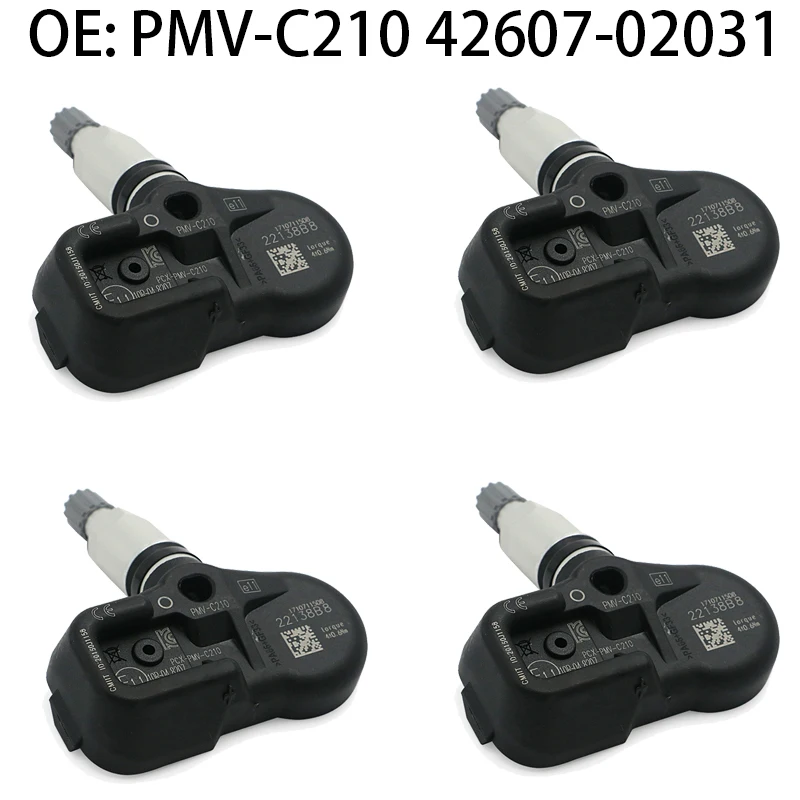 A visual inspection is not enough. Use your tire gauge to check the pressure in all four tires. If you have a flat, refer to the Camry’s owner’s manual (see below) on what to do.
A visual inspection is not enough. Use your tire gauge to check the pressure in all four tires. If you have a flat, refer to the Camry’s owner’s manual (see below) on what to do.
Camry Tire Pressure Warning - TPWS System Failure
Our initial reaction when a warning light comes on is to hope it is wrong. They are sometimes. The TPWS system in your Camry may have a problem, but it is unlikely. Yes, every person who has a problem with the tire pressure system in any car quickly goes to every Facebook forum to report it (angrily). However, the Toyota Camry is not a vehicle that struggles with the TPWS system more so than others.
If you have verified the pressure in your tires is correct using a tire gauge, and the TPWS system is displaying a warning, ask a mechanic for help. You don’t have to go to a Toyota dealer, but if your Camry is under the initial new vehicle warranty, that would certainly make sense.
Like any system in your Camry, age and damage can cause a problem with the TPWS system. Individual sensors can be replaced, but the system will still need to be re-initialized. We suggest that this job is best done by a mechanic or tire professional who understands the system and can handle the work, but you can have go at it with the manual.
Individual sensors can be replaced, but the system will still need to be re-initialized. We suggest that this job is best done by a mechanic or tire professional who understands the system and can handle the work, but you can have go at it with the manual.
Camry Tire Pressure Warning - Tire Sealants
Emergency tire sealants in a can like Fix-A -Flat, or Slime may cause your TPWS sensor to malfunction. This does not mean that the sensor is now destroyed. Here is what the Fix-A-Flat brand says about TPMS systems and its product: “Fix-a-Flat is tire sensor safe. After the qualified tire repair professional has repaired your tire, they should clean the TPMS device with water to remove any sealant that may have come into contact with the device. After the repaired tire is replaced and inflated, the TPMS system can be reset and will resume operating as normal.” The Toyota tire sealant in a Prius’s emergency kit can also clog a TPWS sensor.
Prius Tire Pressure Warning - New Tire Or New Tires
If you buy new tires for your Camry and immediately get a tire pressure warning light check the pressure. Mistakes happen. Flats sometimes happen driving out of a tire shop parking lot. If you have checked the pressure and it is properly set, return to the tire shop and let them know that the Camry’s TPWS system has indicated a problem. If the shop changed the valve stems the system may need to be re-initialized.
Mistakes happen. Flats sometimes happen driving out of a tire shop parking lot. If you have checked the pressure and it is properly set, return to the tire shop and let them know that the Camry’s TPWS system has indicated a problem. If the shop changed the valve stems the system may need to be re-initialized.
Be aware that some TPWS systems are sensitive to tire sizes. You should only use the exact size of tire your Camry came with. If you have mounted aftermarket wheels or a different size tire, the retailer who did the work should be able to explain to you how they will resolve the TPWS system.
Camry Tire Pressure Warning - Nitrogen Is Unnecessary
There are some dealers and shops that will suggest nitrogen as a solution to a TPWS problem in a Camry. The claims that advocates of nitrogen for tires make are unfounded by science (the author’s degree is in mechanical engineering, ask the nitrogen seller what his technical degree is).
Furthermore, your Toyota Camry was designed to work perfectly fine using compressed air.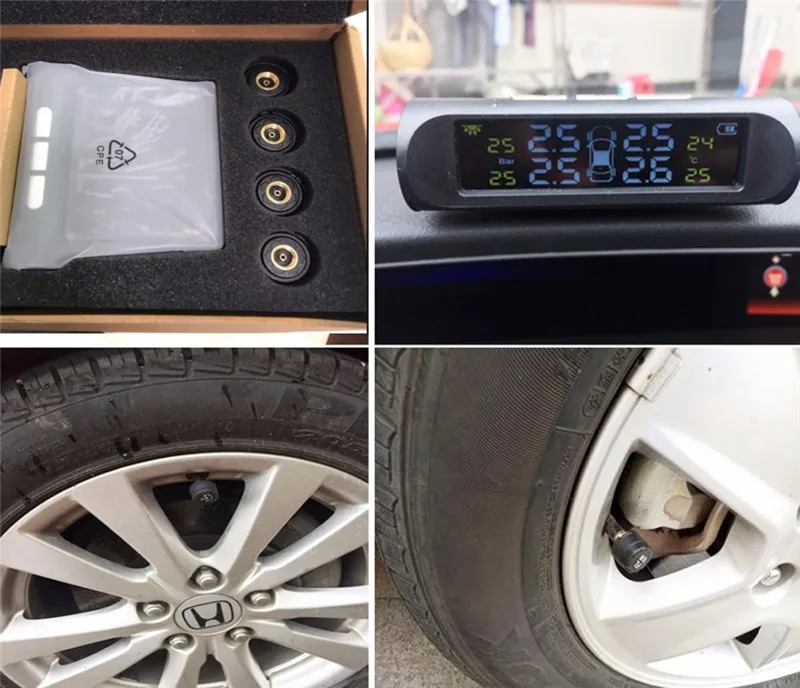 And it should. Does inflating an underinflated tire with nitrogen cause the TPWS light to go out? Of course, it could. Just as inflating the tire with air will do. If you wish to waste money on nitrogen, that is your call. Just know that the Camry doesn’t need it.
And it should. Does inflating an underinflated tire with nitrogen cause the TPWS light to go out? Of course, it could. Just as inflating the tire with air will do. If you wish to waste money on nitrogen, that is your call. Just know that the Camry doesn’t need it.
A TPWS system alert is always an annoyance, but for the most part, it is a feature that is there to help us in case a dangerous situation develops. Add air to your Camry’s tires when temperatures begin to drop in early winter. Reset it again in early summer. These are the best two habits you can have to avoid TPWS issues.
Resources:
Find Your Camry's Owner's Manual Here.
Camry Tire Pressure Frequently Asked Questions:
Q: Where is the Tire Pressure Warning Switch reset button on a Camry?
-A: On some generations, it is under the steering wheel (See top of page image). Follow the instructions in the manual to reset it.
Q: How do you reset the TPMS light on a Camry?
-A: Use the owner's manual link at the bottom of the story to find your Camry’s year and instructions.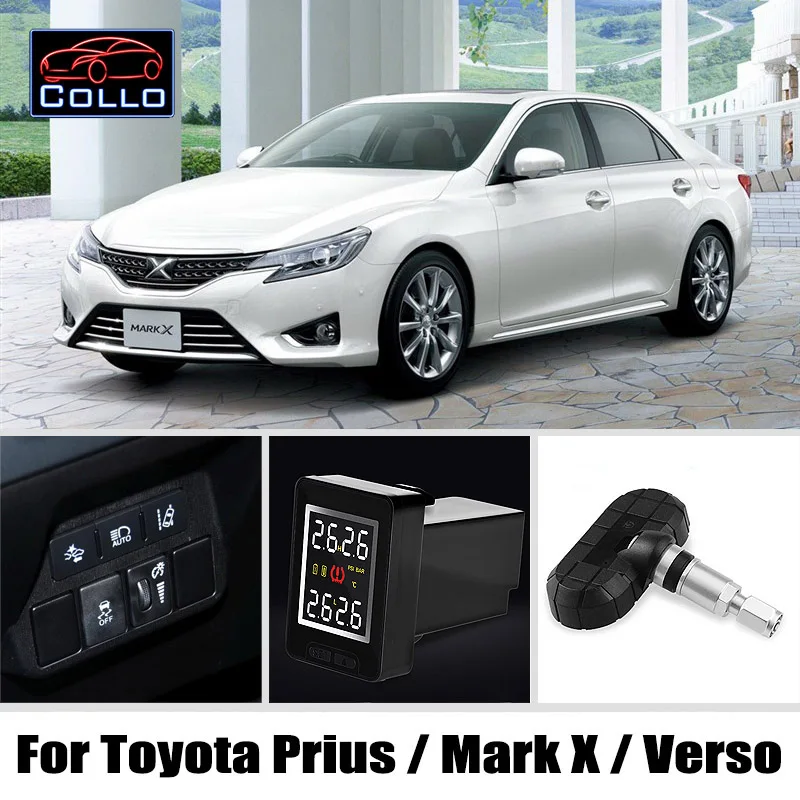 Follow them, but be aware that resting the system may not solve the underlying issue.
Follow them, but be aware that resting the system may not solve the underlying issue.
Q: Can the TPMS be in the Camry turned off?
-A: The TPWS system cannot be turned off. It can be reset.
Q: Is it dangerous to drive with the tire pressure light on?
-A: Yes, driving without knowing why the light is on is dangerous until you have checked the pressure with a tire pressure gauge to verify that the pressures are correctly set.
John Goreham is a long-time New England Motor Press Association member and recovering engineer. Following his engineering program, John also completed a marketing program at Northeastern University and worked with automotive component manufacturers. In addition to Torque News, John's work has appeared in print in dozens of American newspapers and he provides reviews to many vehicle shopping sites. You can follow John on Twitter, and view his credentials at Linkedin
Hover mouse over image to see photo credits
Car Questions
Automotive News
Toyota News, Pricing and Reviews
Follow Torque News on YouTube, Twitter and Facebook.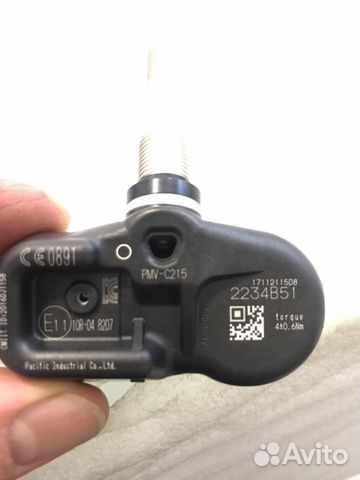
(
Updated:
11/01/2022
)
Article content
The condition of car tires affects traffic safety on the road. Thanks to their correct selection, the car's handling on different surfaces, directional stability, as well as a comfortable ride are ensured. Since tires differ in specifications, they must be selected based on the purpose, the nature of the tread pattern, design features and the chemical composition of the rubber compound.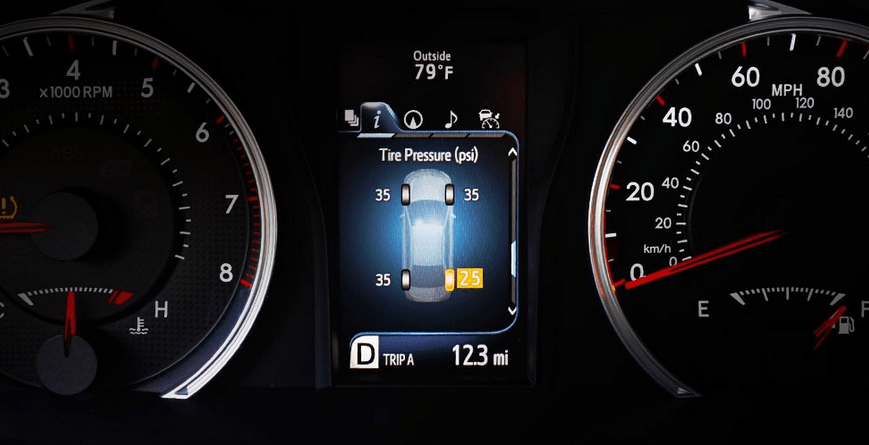
However, even if seasonality, dimensions and size are observed, tires may not show the best qualities. The reason is often the wrong pressure. Failure to comply with this parameter affects the stability of the car at speed and when maneuvering, the wear resistance of the composition, as well as safety.
Reduced pressure leads to deformation in the tires: they heat up more, the side sipes of the tread wear out more actively, and the integrity of the carcass changes. A flat tire works out the bumps on the road worse, so there is a higher chance of damaging the discs when driving through pits.
Increased pressure also adversely affects the behavior of the car on the road:

The worst situation is when different pressures are maintained in all four wheels. Uneven pumping will complicate the controllability of the car: the car will inevitably lead to the side where the wheels with the least pressure are, which will lead to great wear.
To avoid damage and reduce the risk of accidents, the Japanese automaker Toyota Camry has established a policy for its vehicles that involves maintaining tire pressure in the summer to obtain optimal performance from the car. Consider the recommendations that apply to the entire Camry line.
Summer Drive Protection Sound Comfort
Rating:
4.5
Tires Goodyear Eagle F1 Asymmetric 3 SUV
Summer Drive Protection
Rating:
4. 5
5
Tires Goodyear Eagle Sport TZ
Summer Drive Protection
Rating:
4.5
Tires Goodyear EfficientGrip 2 SUV
Summer Drive Protection Run On Flat
Rating:
4.5
Tires Goodyear EfficientGrip Performance
Winter Drive protection
Tires Goodyear UltraGrip Arctic 2 SUV
Winter Drive Protection Sound Comfort
Rating:
4.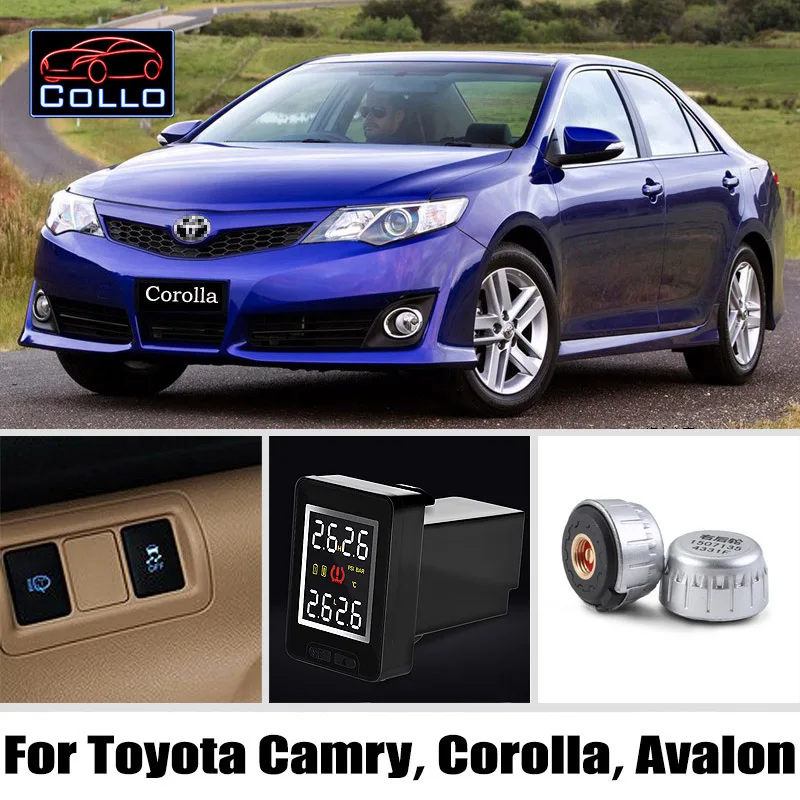 5
5
Tires Goodyear UltraGrip Ice 2
Winter Drive Protection Sound Comfort
Rating:
4.5
Tires Goodyear UltraGrip Ice SUV
Winter Drive protection
Tires Goodyear UltraGrip Performance+ SUV
All season Drive Protection
Rating:
5
Tires Goodyear Vector 4Seasons Gen-3 SUV
Summer Drive Protection Run On Flat
Rating:
4
Tires Goodyear Wrangler HP All Weather
All season Drive Protection
Rating:
4. 5
5
Tires Goodyear Vector 4Seasons
Summer
Rating:
4.5
Tires Goodyear Wrangler All-Terrain Adventure with Kevlar
Summer Drive Protection
Rating:
4.5
Tires Goodyear EfficientGrip SUV
Summer Drive Protection Run On Flat
Rating:
4
Tires Goodyear Eagle F1 Asymmetric SUV
To maintain the tires on the Toyota Camry in optimal condition, you need to follow the developed prescriptions: monitor the service life, seasonality of the model and pressure. Since the Camry model is presented in several bodies, we will consider each car.
Since the Camry model is presented in several bodies, we will consider each car.
Toyota Camry V30
The optimal tire value recommended by the Japanese company is 2.1 bar for the front and rear wheels. The parameter can be increased to 2.9for models with powerful engines, as well as in case of increased load: when transporting passengers, fully loaded trunk. Since different car modifications give different values, check the recommended pressure for your car in the owner's manual. Information is additionally stored on stickers that are placed on the driver's door pillar and gas tank hatch.
Toyota Camry V40
The standard value for Camry in this body is 2.1 bar, which can be increased to 2.7. The value is adjusted within acceptable limits, depending on the load and speed of movement. This recommendation is suitable for R17 and R18 wheels. For regular trips around the city, it is enough to maintain a value of 2.1 bar.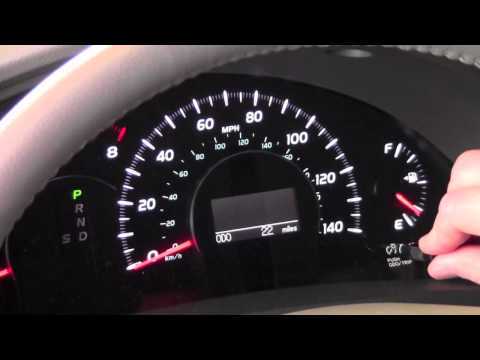 In the case of long country trips at speeds over 150 km / h, it is worth increasing it to 2.7.
In the case of long country trips at speeds over 150 km / h, it is worth increasing it to 2.7.
Toyota Camry V50
Cars are supplied to the Russian car market with wheels of 16-17 diameters, the pressure in which is recommended to be maintained at 2.3 bar for the front and rear axles. The parameter is suitable for winter and summer operation. The manufacturer allows not to increase the performance even with increased load or increased speed.
Toyota Camry V 70
Toyota of the new generation comes with R17-18 wheels, in which the automaker recommends maintaining a value of 2.4 bar. It does not need to be increased with additional loading of the car.
Since maintaining a stable pressure is necessary for a comfortable, safe ride, the manufacturer installs special pressure sensors in cars. They monitor parameters in real time and warn if the tire is under-inflated. In the event of a malfunction, inflate the wheels yourself or contact the nearest service center.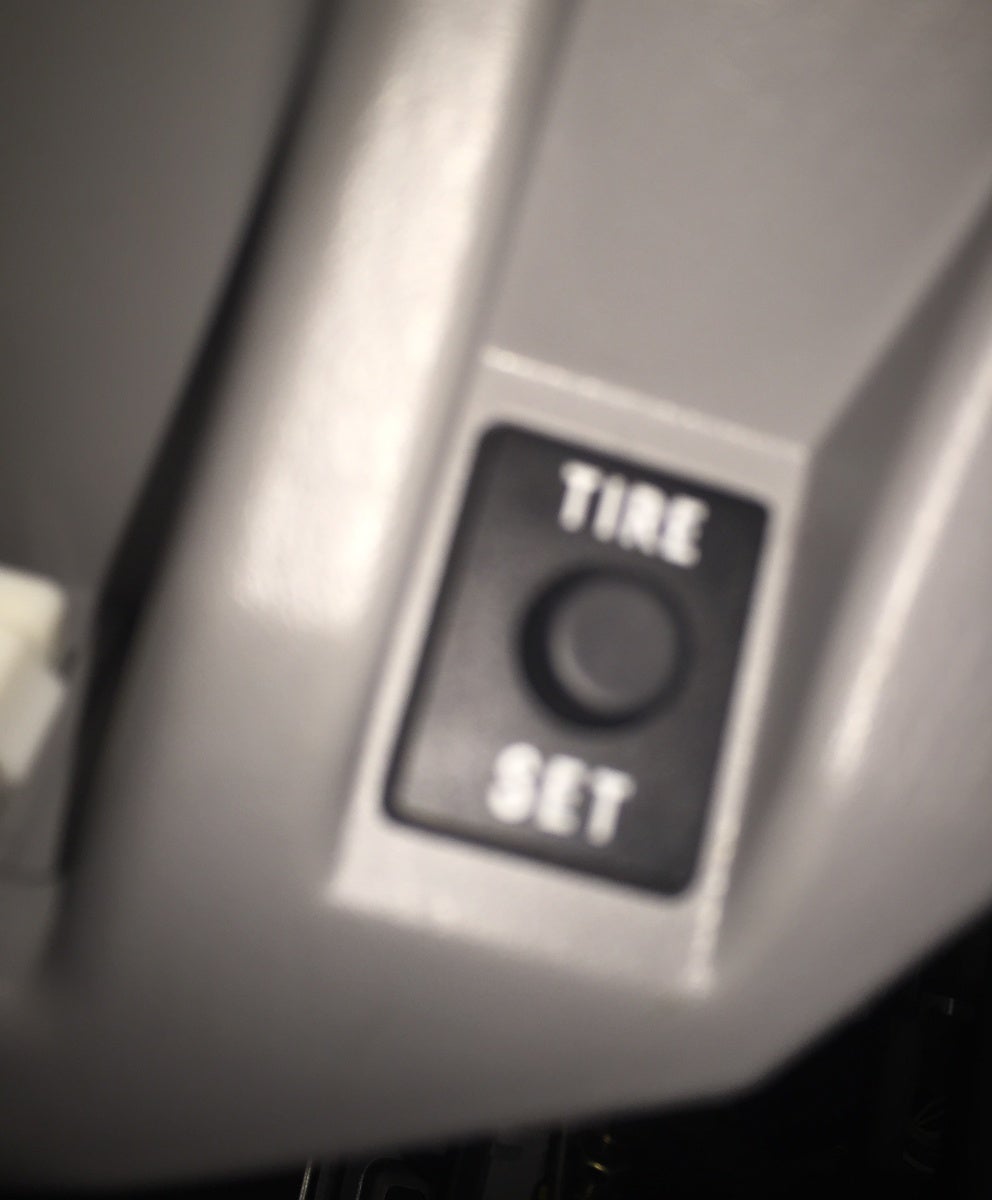
Find Goodyear tires for your car
■ for instrument cluster type B
Low tire pressure warning light (1) / Malfunction indicator TPMS systems (2)
In cold weather, the pressure in each of the tires, including the spare wheel (if any) and, if necessary, bring tire pressure up to the manufacturer's recommended level (indicated on the information plates of the car and tire pressure level). (If a The vehicle is fitted with tires that differ from those indicated on the plates. size, it is necessary to determine the appropriate pressure level for them.)
As an additional security system, the vehicle can be Equipped with a tire pressure monitoring system (TPMS) that provides indication of a significant reduction in pressure in one or more tires with with a low tire pressure warning light.
If the low tire pressure warning light comes on, you must stop the car as soon as possible, check the condition of the tires and bring to their pressure levels to normal. Continue driving at low pressure in tires can cause overheating and mechanical failure of the tires. The operation of tires with lower pressure also leads to an increase in fuel consumption, reduced tire life, and may also affect handling and stopping distance of the car.
Continue driving at low pressure in tires can cause overheating and mechanical failure of the tires. The operation of tires with lower pressure also leads to an increase in fuel consumption, reduced tire life, and may also affect handling and stopping distance of the car.
Please note that the use of TPMS does not mean the absence of the need for proper tire maintenance or maintenance proper pressure, even if the reduction in pressure level is not sufficient to activation of the low pressure warning device in the tires of the TPMS system.
The vehicle also has a TPMS malfunction indicator, to control the correct operation of the system. Indicator Malfunctions of the TPMS system combined with an indicator device for low tire pressure. When a malfunction is detected, the indicator device will flash for about one minute and then turn on constantly. This sequence will be repeated on subsequent launches.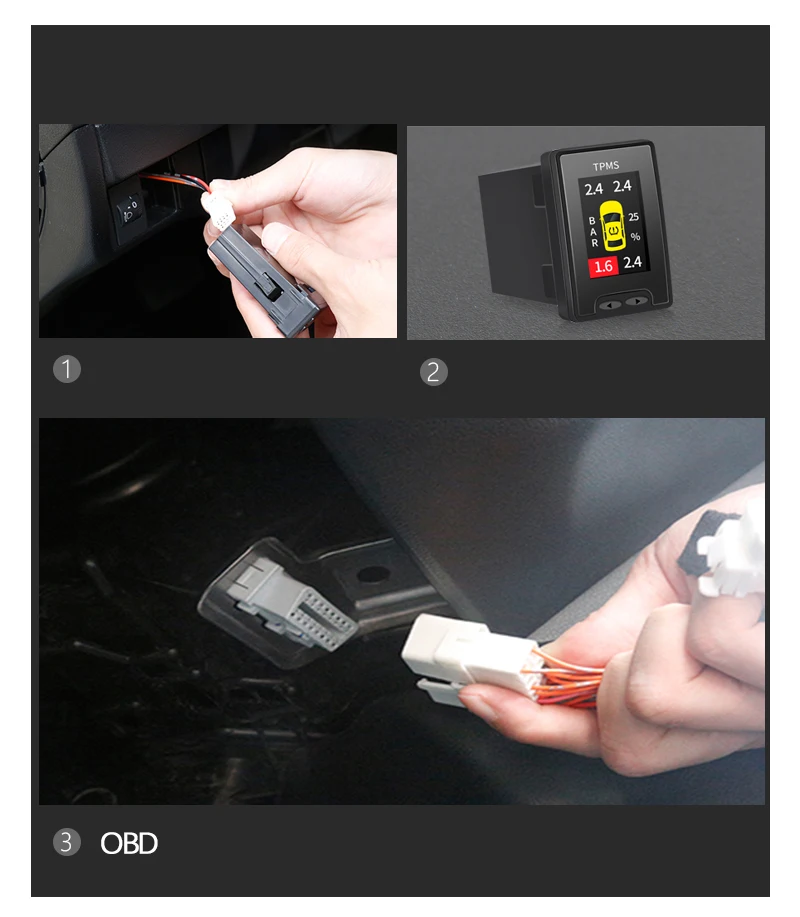 engine while the fault is present. If the malfunction indicator on, possibly incorrect detection or low level indication tire pressure. A malfunctioning TPMS system can be caused by various reasons, including fitting or changing tires or wheels.
engine while the fault is present. If the malfunction indicator on, possibly incorrect detection or low level indication tire pressure. A malfunctioning TPMS system can be caused by various reasons, including fitting or changing tires or wheels.
Always check the TPMS malfunction indicator after replacing one or more tires or wheels or swapping them in order to Verify that the TPMS system is working.
If the low tire pressure indicator (TPMS) does not illuminate for 3 seconds after turning the ignition key to the BKJI(ON) position or starting engine or continues handful but after approximately 3 s, We recommend that you contact an authorized Kia dealer.
Low tire pressure warning light
Tire pressure warning lights on indicates a significant decrease in the level of pressure in one or multiple tyres.
Reduce speed immediately. Avoid sharp turns and remember to increase the stopping distance. In this case, you must immediately stop the car and check the tire pressure.
In this case, you must immediately stop the car and check the tire pressure.
Adjust the tire pressure to the correct pressure indicated on the information plates located on the middle pillar of the outer panel body trim on the driver's side. If you are unable to get to a service station, or the tire does not hold the added volume air, replace the low pressure tire with a spare.
In this case, the TPMS system malfunction indicator and indicator The low tire pressure device may turn on and burn after restart the engine and for approximately 20 minutes of continuous movement until the blown tire is repaired and installed.
In cold weather, the low tire pressure warning light may light up when the tire pressure is set to the recommended warm weather. This does not mean a malfunction of the TPMS system, as the downgrade temperature leads to a proportional decrease in tire pressure.
When moving from an area with low temperature to an area with high temperature and vice versa, or if the outside temperature is significantly higher or below, it is necessary to check the tire pressure and bring it to recommended level.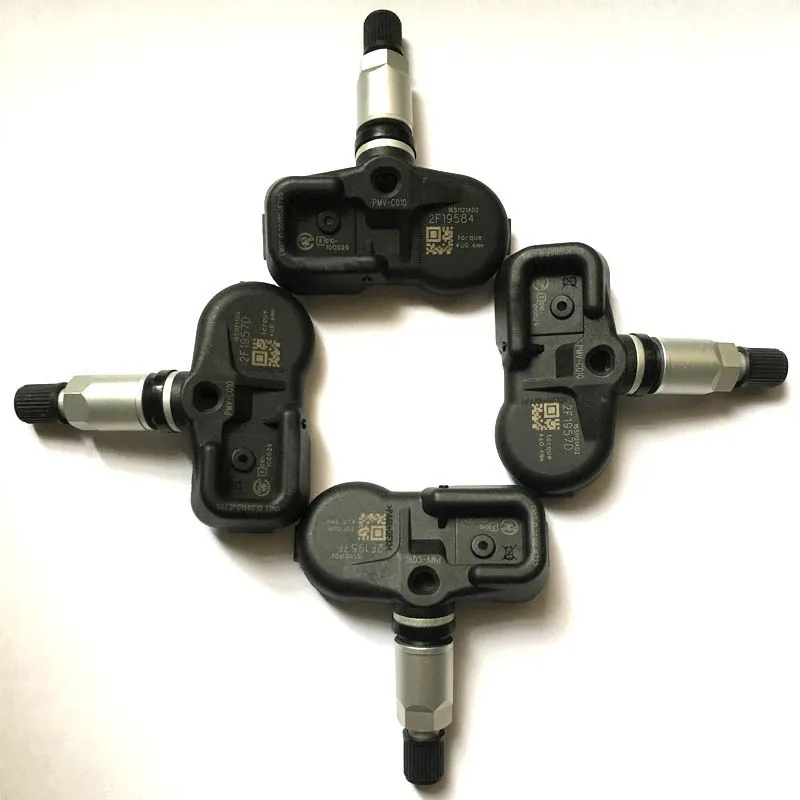
- Danger of low pressure Too low tire pressure can lead to loss of vehicle control and increased stopping distance.
Continued driving with low tire pressure may result in overheating and mechanical destruction of tires.
TPMS malfunction indicator (pressure monitoring system in tires)
the low tire pressure device will flash for one minute and then it will turn on continuously. If the system is capable of simultaneous detection of low tire pressure warning and malfunction system, TPMS system malfunction indicator and indicator device low tire pressure may light up at the same time. For example, if in If the front left wheel sensor fails, the indicator will light up. system malfunction, but the pressure in the remaining tires will be lower than required, this can be indicated on the indicator device at the same time as the TPMS malfunction indicator light is on.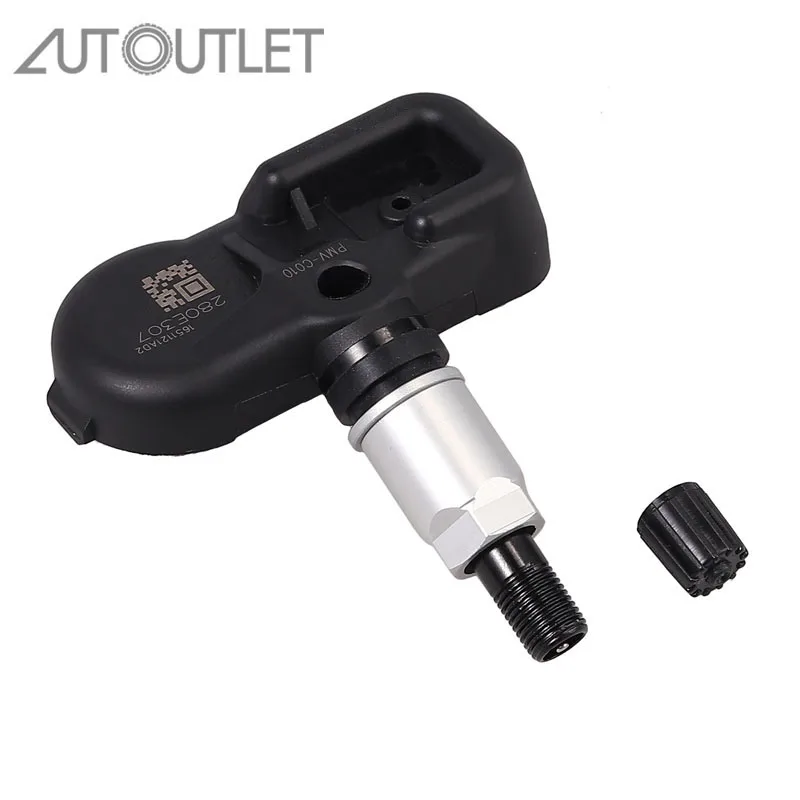
We recommend having an authorized Kia dealer check the system.
• System fault indicator T may also come on when driving vehicle past power cables or radio transmitters (such as past the post of automobile inspection, government agencies, broadcasting stations, military installations, airports, transmitting stations etc. The resulting interference may cause the system to malfunction. tire pressure monitoring (TPMS).
• The TPMS malfunction indicator may illuminate if chains are on the tires. anti-skid or the vehicle uses any electronic devices (such as laptop, charger for mobile phone, remote starter, satellite navigation system etc.). This may interfere with the normal functioning of the control system. tire pressure (TPMS).
Replacing a tire equipped with TMPS
If the tire is flat, the Low Tire Pressure and Position (position). We recommend contacting an authorized Kia dealer.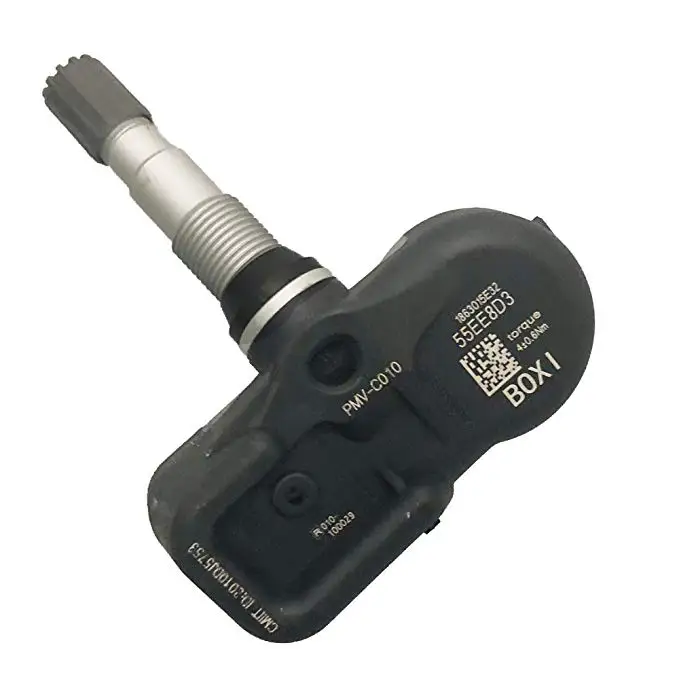 to check the system.
to check the system.
Kia approved sealant is recommended.
Sealant from the tire pressure sensor and the wheel will be removed when changing the tire to a new one.
Each wheel has a tire pressure sensor that is installed inside the tire behind the spool rod. Need to use wheels TPMS compatible. It is recommended to always perform maintenance tires from an authorized Kia dealer.
The indicator device will continue to burn even after replacing the blown wheels on the spare until the deflated tire is repaired and installed.
In the event of replacing a flat tire with a spare fault indicator TPMS system may turn on and burn for several minutes, because the TPMS sensor installed in the spare tire did not pass initialization.
After re-inflating a flat tire and installing this wheel back to the vehicle or perform TPMS sensor initialization in spare wheel at an authorized Kia dealer station, indicator TPMS malfunctions and low tire pressure indicator device turn off after a few minutes of movement.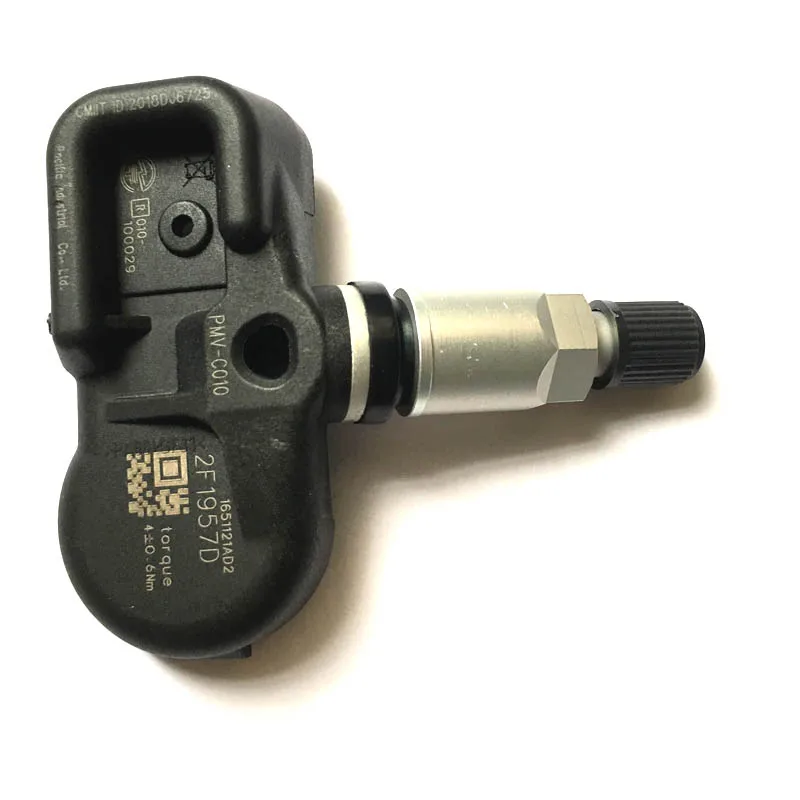
If the indicator does not turn off within a few minutes of starting movement, we recommend having an authorized Kia dealer check the systems.
ATTENTION in case of replacing the original wheel with spare tire, the TPMS sensor needs to be initialized on installed spare tire and deactivate the TPMS sensor on the removed original wheel. If not deactivate the TPMS sensor on the original wheel and place this wheel in the spare wheel holder, the system tire pressure monitor may not function properly. Recommended Have the system serviced by an authorized Kia dealer.
A tire with a low pressure may not differ in appearance from tires with normal pressure. To measure tire pressure always use good quality gauges. Please note that in a bus with more than high temperature (e.g. after driving) will be a higher level pressure, compared to a colder tire (if the car was not moving for more than 3 hours or traveled less than 1.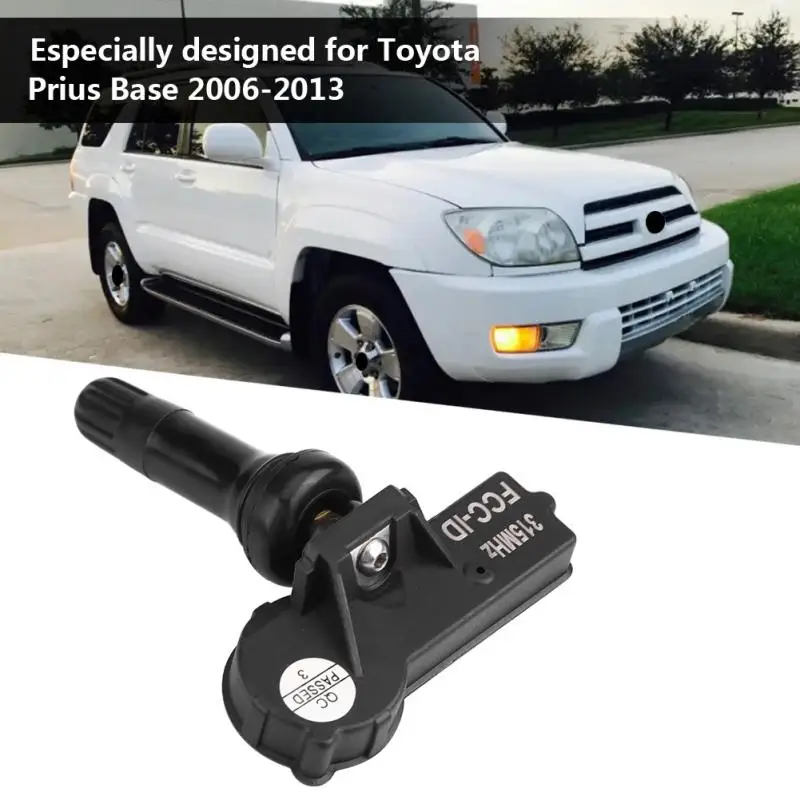 6 km in a 3-hour period). Wait until the tire has cooled down before measuring the tire pressure.
6 km in a 3-hour period). Wait until the tire has cooled down before measuring the tire pressure.
Before inflating a tire to the recommended pressure, check that the tire is has a normal temperature.
This means that the vehicle has not moved for 3 hours or has passed less than 1.6 km in a 3-hour period.
If the vehicle is equipped with a tire pressure monitoring system, we recommend use a Kia approved sealant. Liquid sealant can damage tire pressure sensors.
• The TPMS is not designed to alert you to sudden damage. tires caused by external factors such as sharp objects on the road.
• If the vehicle's behavior on the road becomes unstable, immediately remove your foot from the gas pedal, gently and with little effort press the pedal brakes and bring the vehicle slowly to a safe position on the road.
Improper use, modification or disabling of system components tire pressure monitoring system (TPMS) can affect the system's ability to alerting the driver of low tire pressure or system malfunction TPMS.